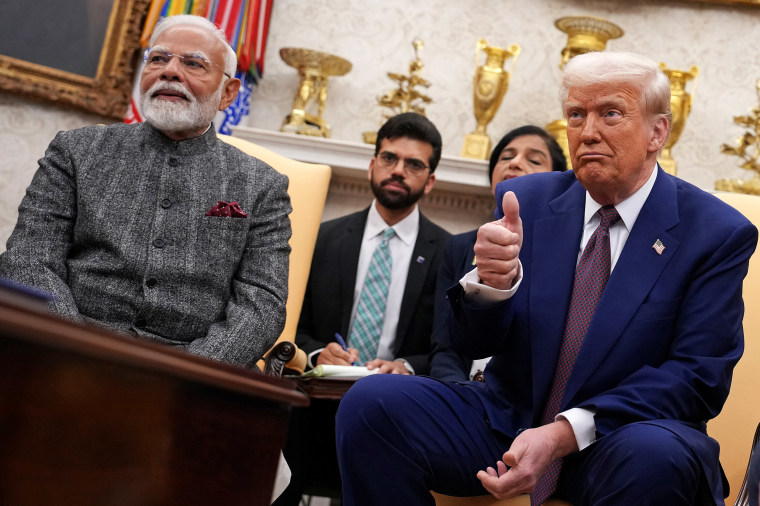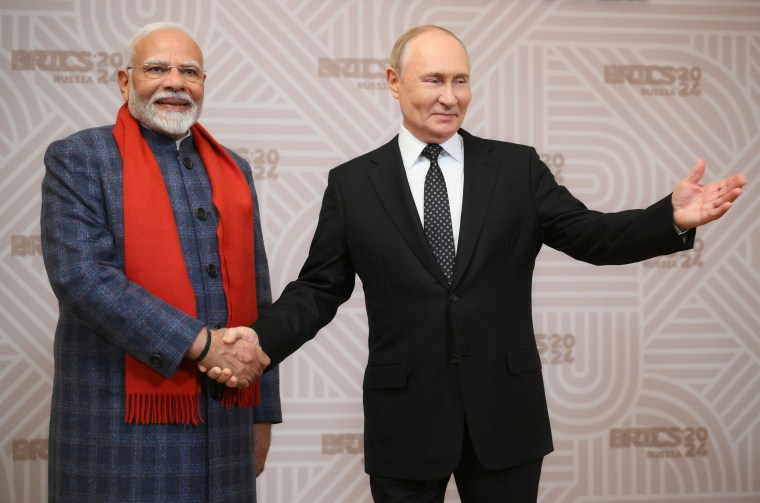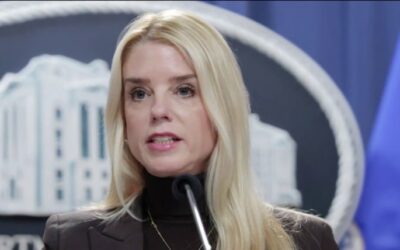Modi was ready to ‘make India great again,’ then Trump put America first

The U.S. and India’s blossoming friendship is at risk of falling to pieces, observers have warned, as President Donald Trump threatens to substantially increase tariffs on Indian goods over its purchases of Russian oil.
At the start of the year, India seemed to be one of the countries most likely to win Trump’s favor, given its growing role as an Asian counterweight to China and Trump’s close relationship with its leader, Prime Minister Narendra Modi.
But U.S. relations with India have instead come under strain over trade and other issues. Trump has threatened Apple and other companies that manufacture in India, moved closer to its biggest rival, Pakistan, and mocked India’s “dead” economy.
“He’s threatening to undo, or at least hit pause on, what has been two decades of steadily improving relations between India and the U.S.,” said Dhruva Jaishankar, executive director of the Observer Research Foundation America, a nonprofit group in Washington.
On Monday, citing India’s “massive” purchases of Russian oil, Trump said he would “substantially” increase the U.S. tariff on Indian imports, which is already one of the highest among Asian countries at 25%. Along with China, India is a top purchaser of Russian crude oil sanctioned by Western governments after Moscow’s 2022 invasion of Ukraine.
In a sharp response, India, a major U.S. security partner, said such criticism was “unjustified and unreasonable” and that it bought Russian oil with U.S. support.
“India began importing from Russia because traditional supplies were diverted to Europe after the outbreak of the conflict,” the Ministry of External Affairs said in a statement Monday. “The United States at that time actively encouraged such imports by India for strengthening global energy markets stability.”
The White House did not immediately respond to a request for comment.
U.S.-India tensions are mounting domestic political pressure on Modi, with opponents accusing him of failing to stand up to his “dear friend” Trump.
“The country is now bearing the cost of Narendra Modi’s ‘friendship,’” the opposition Congress party said last week.
‘I don’t want you building in India’
It was a different picture in February, when Modi was among the first world leaders to visit the White House after Trump returned to office. Mirroring Trump, he said he too would “make India great again.”
The bonhomie did not last long. Since then, Trump has needled India over a number of issues, including billions in investment by American companies as they shift manufacturing from China.

Last quarter, India produced 44% of U.S. smartphone imports, more than any other country including China, according to data from the research firm Canalys. That includes iPhones sold in the U.S., the majority of which Apple chief executive Tim Cook says will have India as their country of origin starting this quarter.
“I don’t want you building in India,” Trump said he told Cook in May, urging him to produce phones in the U.S. instead, despite the difficulties.
Cozying up to India’s foe
A terrorist attack in Indian-controlled Kashmir that killed 26 people in April is another source of friction in U.S.-India relations.
India responded by bombing neighboring Pakistan, which it has long accused of harboring terrorists, resulting in a four-day conflict that threatened to explode into a broader war fueled by decades of tensions between the two nuclear-armed countries.
Trump irked India by repeatedly claiming that he had personally brokered a ceasefire. While Islamabad thanked Trump for mediating, India rejected claims of U.S. involvement, including in a call between Modi and Trump.
“India has not endorsed Trump’s claim,” said Amitendu Palit, a former Indian finance ministry official and a senior research fellow at the Institute of South Asian Studies at the National University of Singapore.
“That has not gone down very well with Trump,” he said.
Within weeks, Trump hosted Pakistan’s powerful army chief at the White House in an unprecedented meeting. He has also imposed a lower tariff rate on Pakistan of 19% and said the U.S. had reached a deal with Pakistan on exploring its oil reserves.
Squeezed over Russia
As Trump has expressed growing frustration with Russian President Vladimir Putin, he has turned his attention to India’s relationship with Moscow.
For years, New Delhi has benefited from its “non-aligned” foreign policy, which allowed India to strengthen U.S. ties while continuing its longstanding relationship with Russia, one of its main suppliers of energy and military equipment.

When Russian oil was hit with Western-led sanctions over Ukraine, India — the third-largest energy consumer in the world after China and the U.S. — seized the opportunity to buy it at a discount, which even U.S. officials said helped stabilize global oil prices.
“They bought Russian oil because we wanted somebody to buy Russian oil,” Eric Garcetti, the U.S. ambassador to India under former President Joe Biden, said at a conference last year. “It was actually the design of the policy, because as a commodity we didn’t want oil prices going up.”
The U.S. position on India’s oil purchases appears to have reversed under Trump, who said in a social media post last week that India and Russia “can take their dead economies down together.”
“We are now at a stage where the American ability to control Russia and its allies is beginning to impact India,” Palit said.
Jaishankar said that while Trump’s actions won’t push India out of America’s orbit, they could drive India to strengthen ties with other countries such as China. During a meeting of their foreign ministers in Beijing last month, India and China agreed to resume direct flights between their countries for the first time in five years.
Despite the recent setbacks in their relationship, India will continue to engage with the U.S. as a key strategic and technological partner, said Chietigj Bajpaee, a senior research fellow for South Asia at Chatham House, a London-based think tank.
“But I think it’s a wake-up call of sorts,” he said.





